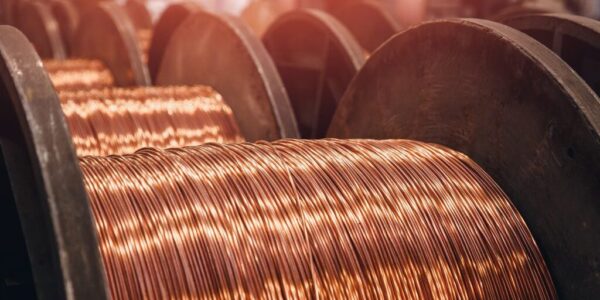
Copper, a fundamental element in the wire and cable industry, is facing a potential shortage that could significantly impact global manufacturing, particularly in the aerospace and defense sectors, where it plays a critical role in various technologies and infrastructures.
Projected Shortage
According to the International Energy Agency, by 2030, global copper production will only meet 80% of the world’s requirements. This anticipated shortfall is driving prices to record highs, reflecting investor concerns over future supply constraints.
Challenges in Copper Supply
A key reason for the impending shortage is the misconception that copper is easy to mine. In reality, locating and extracting copper resources is increasingly challenging. Regulatory approval for new copper mines has fallen to the lowest in a decade, according to industry analysts, highlighting the difficulty of expanding mining capacity. This is an ominous sign, as developing new mines often takes 10 to 20 years for permitting and construction.
Goldman Sachs forecasts that surging copper demand could push prices to $15,000 per tonne by 2025, which would be 67% above current levels. While global supply is expected to increase by 26% to 38.5 million tonnes annually by 2035, this would still fall short of demand by 1.7%, even when factoring in increased recycling efforts. These projections underscore the urgent need for strategic investments in copper mining and processing to meet future demand.
Impact on the Mil-Aero Industry
For the military and aerospace industries, a copper shortage could affect the production of high-performance wire and cable systems critical to mission success and safety. The transition to electric vehicles and renewable energy systems requires significantly more copper, and sourcing this material may become increasingly challenging.
In aerospace, copper’s role in advanced avionics and control systems is irreplaceable. Any disruptions in supply could lead to delays and increased costs in production and development.
Future Outlook
While alternatives like aluminum exist, they often require compromises in efficiency and performance. Achieving net-zero carbon emissions by 2050, a goal set by international agreements, necessitates nearly doubling annual copper demand by 2035. Whether this is achievable remains to be seen, but the need for strategic planning and investment in copper production is clear.
At Standard Wire & Cable Co., we are actively monitoring these developments to continue providing reliable wire and cable solutions. We remain committed to maintaining high standards and addressing industry challenges to meet future demands.
